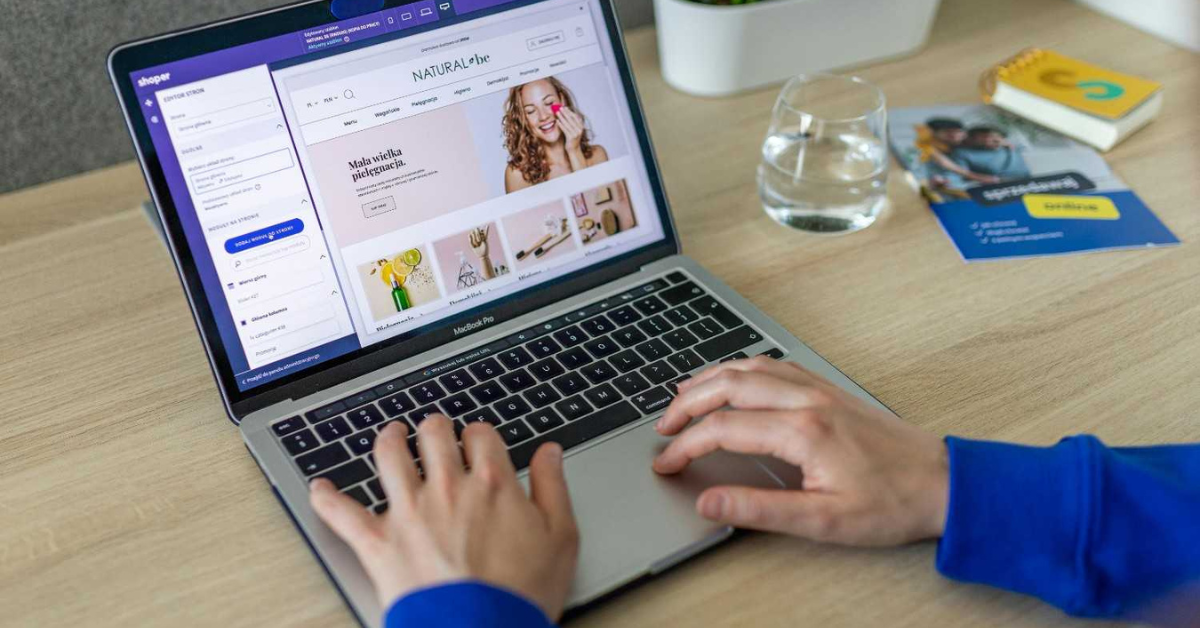Did you know you're leaving lots of money on the table if you're not implementing the best practices for A/B testing?
When you invest your time and money in creating landing pages, emails, and attractive CTA buttons, you may want to test them to identify what will make your customers click and convert.
A/B testing, popularly known as split testing, is an essential part of your conversion funnel that helps you compare two different versions of the same marketing asset.
The idea is to test one version on one group of people and the other version on the other group and then compare and measure the difference in performance.
What A/B testing ecommerce does is exclude guesswork and assumptions out of the process.
If done incorrectly, A/B testing can cost businesses plenty of money and time. That is why it's critical to get this step right if you want to make informed future decisions for your online business.
Luckily, this guide to A/B testing will help you learn how to split-test like a pro. Continue reading to learn the best practices for A/B testing to notice an upsurge in your conversion rates.
A/B Testing Explained
As already discussed in the introduction, split testing is a process that enables you to test and compare two alternative forms of the same element. You can split-test any aspect of your ecommerce store, be it web design, CTAs, content copy, or more.
For example, if you're unsure whether your customers will prefer long-form product descriptions or short-form descriptions, you can split-test by showing half of your prospects a longer form of copy and the other half with a short-form copy.
Observe the conversion rate for each of the product pages for a week or so. Which page converted more prospects into paying customers? You got that, right?
What Are The Benefits Of A/B Testing?
Businesses that use A/B testing continuously and consistently witness a noticeable rise in their conversion rates over time. Also, they tend to provide a better user experience than brands that don't use this tactic. Some other benefits of using A/B testing for your ecommerce store include:
Improved Content
A/B testing enables you to identify the type of content your customers respond to the most. By split testing two variants of the same copy, you get to know which one performs and converts the best and what further steps you can take to improve your content marketing down the line.
Better Engagement
You can improve the user experience on your website by replacing different elements on your page. As a result, your customers will feel more valued and engaged. That goes without saying that happy customers = more engagement = more conversions.
More Sales
The very purpose of creating an online store is to earn money. Conducting A/B testing for your store leads to more paying customers investing in your products and services.
With the best A/B testing ecommerce practices, even the most expensive products available on your shelves will go.
Ease Of Statistical Analysis
Unlike in the past, when A/B testing was confined to raw numbers only, today's split-testing includes advanced-level statistical techniques to help you out with the decision-making process.
Prevent Future Disasters
While split-testing different elements on your store, you're more likely to discover potential risk factors that could negatively impact your online business if not addressed in time.
Split testing highlights the shortcomings that your ecommerce store has and helps you prevent any possible future disaster.
Reduced Cart Abandonment Ratio
For online businesses, getting a customer to complete a checkout process after clicking on the 'Buy Now' button is the most challenging task. A/B testing allows you to adjust and optimize your order and checkout pages so that buyers can complete the checkout process without the hassle.
What Areas Of Your Online Store You Should A/B Test?
You can A/B test every part of your website for conversion and growth. Here are some of the areas of your website that you must split-test for perfect optimization.
- Website Layout
- Typography
- Navigation
- Colors
- Fonts
- Text
- CTAs
- Pricing schemes
- Landing pages
- Images, videos, and pop-ups
- Badges
- Banners
Make sure you test different variations of these elements, including size, colors, and placement, to see what works best.
How To Conduct Split Testing: A Step-by-Step Guide
Platforms like Shopify and BigCommerce have made it incredibly easy for business-minded people to establish a business online. But you may need to reconsider your approach if you think that everything will work smoothly straight out the gate.
Without regular A/B testing, you'll never know what works and what isn't. If you haven't conducted split testing for your e-store earlier, you have come to the right place. This step-by-step A/B testing guide will help you perform split testing of different elements on your website without hiring someone.
Know Your Goals
A/B testing is the technical process, and conducting it for the sake of testing can do more harm than good for your online store.
You need to know why you're split-testing different elements on your website and what outcomes you're getting out of the process. Define your goals in the beginning. Are you conducting a split test to increase conversions? Is your goal to reduce your bounce rate?
Have A Handle On The Current Statistics
Before you split-test any two versions of the same asset, you have to get a handle on the current statistics. This will enable you to discover which of the two variants performs better than the other.
Analyzing your current data also helps you identify the shortcomings and voids your data might have.
Start Small
Many elements on your website look small and insignificant at first glance but have a massive impact on your site's overall functionality and performance.
Choose one element at a time and move forward as you get familiar with the testing process.
You Don’t Have To Change Everything
While it may be tempting to test everything available on your site and change it, you don't have to tweak everything. If something is working already well, let it be. Do not make unnecessary changes as it will cost you time and money.
15 Best Practices For A/B Testing
1. Set Expectations
Setting wrong expectations can cost your business heaps of money. Many businesses start A/B testing only because they have seen other online ventures doing good with this approach.
But when they start testing and tweaking elements on their website without identifying their goals, they end up achieving nothing.
So the first step is to set SMART goals that you can achieve by improving and optimizing your CRO strategy through the best practices for A/B testing.
2. Test The Right Elements
One of the best practices for A/B testing is to compare the efficacy of elements that make a difference to your site's overall results and performance.
According to Hubspot, businesses must consider testing the below-listed pages as customers visit these pages the most.
✓ Home Page
✓ About Us page
✓ Blog section
✓ Contact Us page
3. Get The Sample Size Right
The sample size you're taking into account must be accurate. Remember, if you don't involve many people, you won't get reliable results.
There are many online tools available that you can use to determine your sample size.
These tools require you to input your current conversion rate and the percentage rise you'd expect after making changes based on split testing. The software will automatically evaluate the number of people you'll need to perform your A/B test.
4. Use Reliable Data
Needless to say, the data you'll be using to split test different elements on your website must be reliable and statistically significant for the procedure. To determine data significance, you can use any of the statistical significance tools available online.
These tools display the P-value. You're good to go if you get 'Yes' but may have to adjust metrics if you get 'No' in results.
5. Understand Your Limitations
Many CRO programs fail because they're not backed by suitable technical resources. Even before you think about conducting an A/B test for your website, make sure you identify your strengths, weaknesses, and above all, technical limitations.
6. Form A Hypothesis
Without forming a hypothesis, you may never identify potential issues on your website. If you haven't heard of this term earlier, forming a hypothesis helps you spot the areas you need to split test.&
It also helps you know the scope of your test. At this point, you may want to create buyer personas, conduct qualitative and quantitative analysis, and perform competitive analysis to determine the list of elements that you can test on your website.
7. Test Scheduling
Another effective A/B testing practice is called test scheduling. You cannot compare apples with oranges to get the most accurate results. Similarly, you cannot correlate your routine sales to the amount of traffic you receive during holidays.
Make sure you conduct a split test of the comparable periods to get reliable results.
8. Create Design Variations
After creating a hypothesis and performing test scheduling, the next step is to develop new pages that include new changes. You can create mock-up designs using pen and paper before you create design variations for the test.
Once these designs are approved, you can create them using any software available online.
9. Test Duration
The reliability of your test results also depends on how well you're nailing your test duration. For instance, if you're split-testing using different design variants and your goal is, say, 600 conversions, then you must run a test for a longer duration than you would perform a test for a single variant and 200 conversions.
10. Never Make Mid-Test Changes
Another A/B testing ecommerce best practice is to never make mid-test changes. If you interrupt in the middle, you won't get trustable results.
Once you have set a date to run your test, stick to it and wait for the outcomes to come in.
11. Retest
Got a winning design in an A/B test? Keep on testing. The testing process never ends. Make sure you test your original and updated campaigns from time to time to notice a constant improvement in your sales and conversions.
12. Look For Actionable Marketing Insights
The biggest advantage of using A/B testing is that it enables you to gain valuable marketing insights to apply across different channels. Remember, your goal isn't confined to testing two variants only. Be always on the lookout for marketing insights from your test to use in your future marketing campaigns.
13. Do Basic Math
A/B testing and analytics go hand in hand. Before optimizing any page on your site, you should carefully monitor your site's analytics to figure out the total number of visitors you're getting on that particular page.
In addition to that, you may also have to perform a qualitative usability analysis to know about your customer's feedback.
14. Choose The Best Split Testing Tools
There are both paid and free A/B testing tools available on the market. Choose something that aligns well with your testing goals and deliver precise results.
15. Test One Element At A Time
A million-dollar tip - Always test one element of your site at a time. Doing so will help you identify the voids, and you'll know which specific page/element is making all the difference in your conversions.





